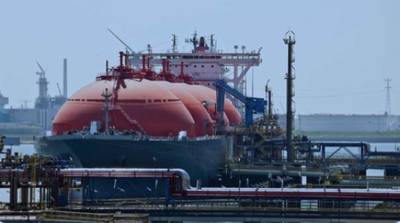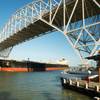Important LNG Trade Developments Summed Up by GIIGNL
In a report just published, the International Group of Liquefied Natural Gas Importers (GIIGNL) note that in 2012, LNG trade has seen the first decline (minus 1.9%) in the past thirty years. The strong growth in spot and short term trade seen in recent years (up by 110% from 2009 to 2011) is no longer there, primarily, but not solely, in line with the lack of new supplies. Extracts fromthe report follow:
The 2011 catastrophic tsunami in Japan continued its grip on LNG flows throughout 2012, causing massive shifts eastwards of Atlantic Basin and Middle East-sourced cargoes to satisfy the strong demand of
Japan’s power industry. Its commercial effects are likely to continue beyond the current year as well as beyond a mere diversion of product flows.
On the production side, capacity additions have been below expectations and insufficient to make up for the higher loss of capacity due to planned shutdowns and unscheduled production interruptions, mainly resulting from a shortfall of feed-gas. As a result, in 2012, LNG trade has seen the first decline (minus 1.9%) in the past thirty years.
Two events in 2012, albeit of a different nature, stand out among the highlights of the year: a significant rise in reloads, and the first final investment decision (FID) of exports from North America.
1. Reloads
Reloading of cargoes in receiving terminals is generally presented as a demonstration of commercial innovation though sometimes simply allowing to overcome destination restrictions or difficult negotiations on profit sharing from cargo deviations. Considering operational cost efficiency and the environmental impact, it is doubtful that reloads will continue to be a growing feature in LNG trading, despite a total count in 2012 of 70 re- exported cargoes actually discharged in 2012 (up 60% from last year). It is noteworthy that Europe makes up more than three quarters of these reloads, nearly all attributable to Spain and Belgium, two of the countries in Europe with sufficient firm destination supplies to sustain regular reloads.
2. US LNG exports
The hotly debated US LNG exports on the other hand are to be viewed as a far more important trend with profound commercial consequences, assuming that last year’s pioneering FID by Cheniere will have several followers in 2013.
However none of the twenty or so projects somewhere “in the pipeline” in the USA and Canada have reached this final stage yet. The commercial pricing principles will be groundbreaking if the Cheniere project is followed by other projects, eagerly awaited by many Asian importers, hoping that Henry Hub-based pricing can bring relief from crude price indexation in the future.
The GIIGNL report can be accessed here: http://www.giignl.org/











